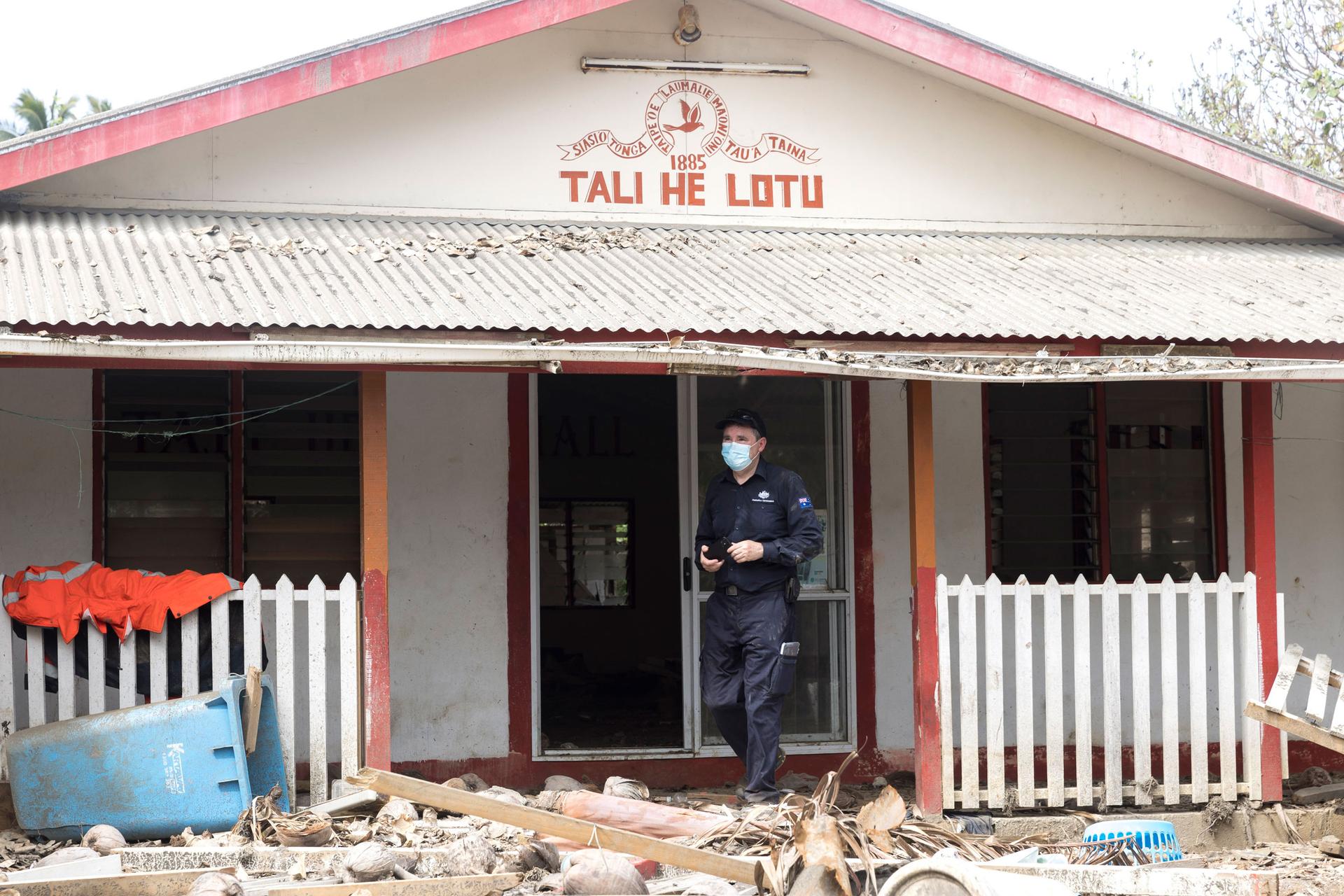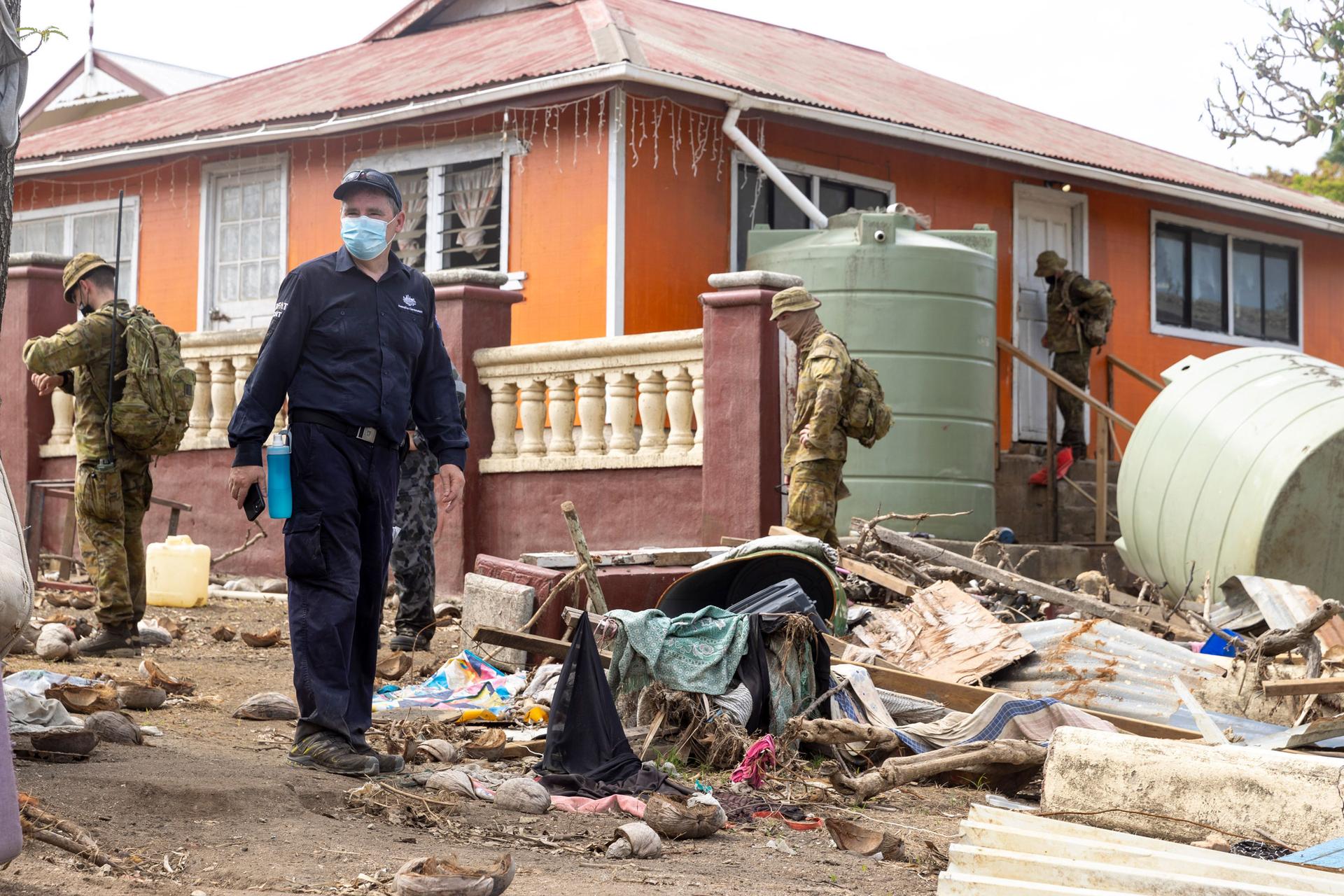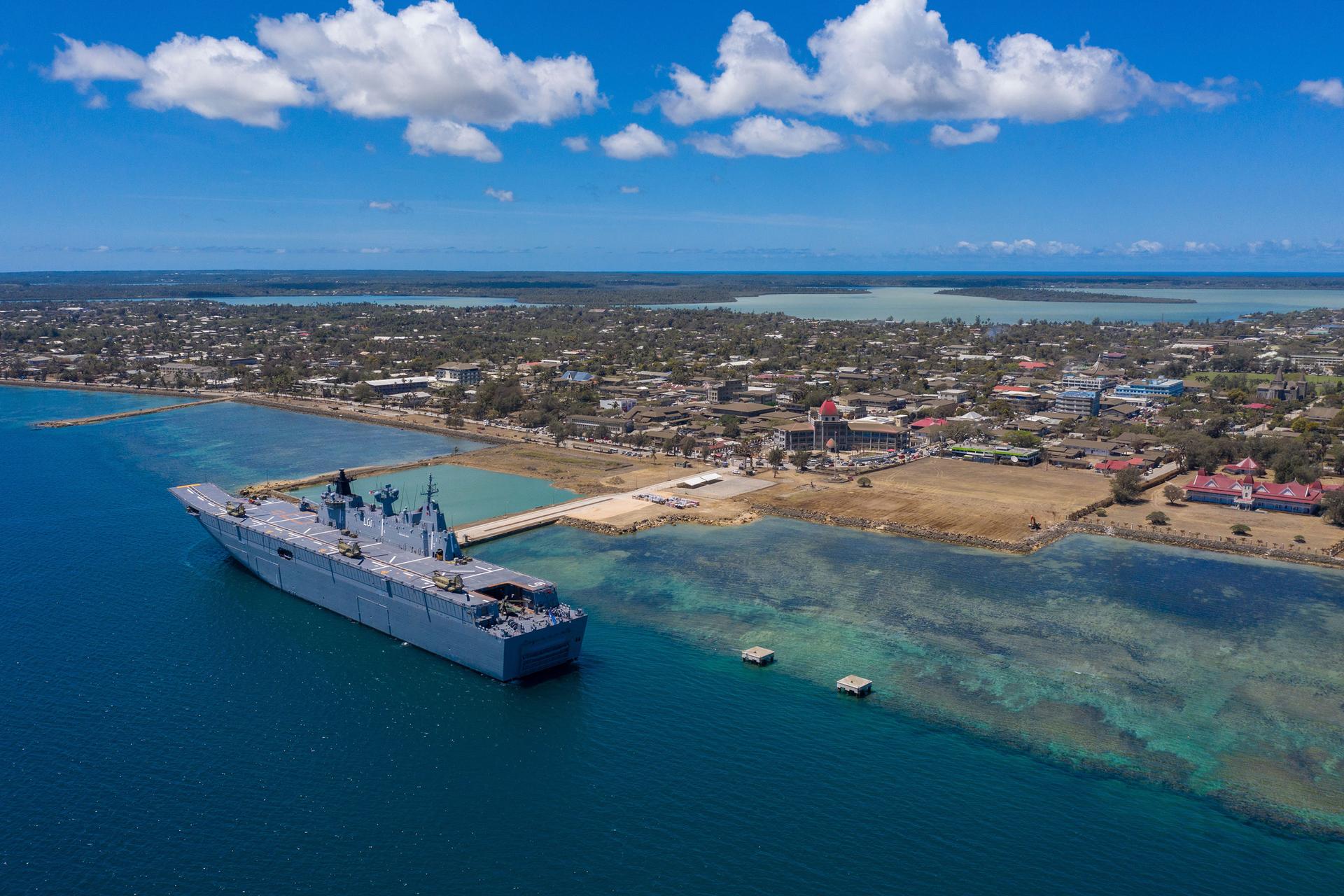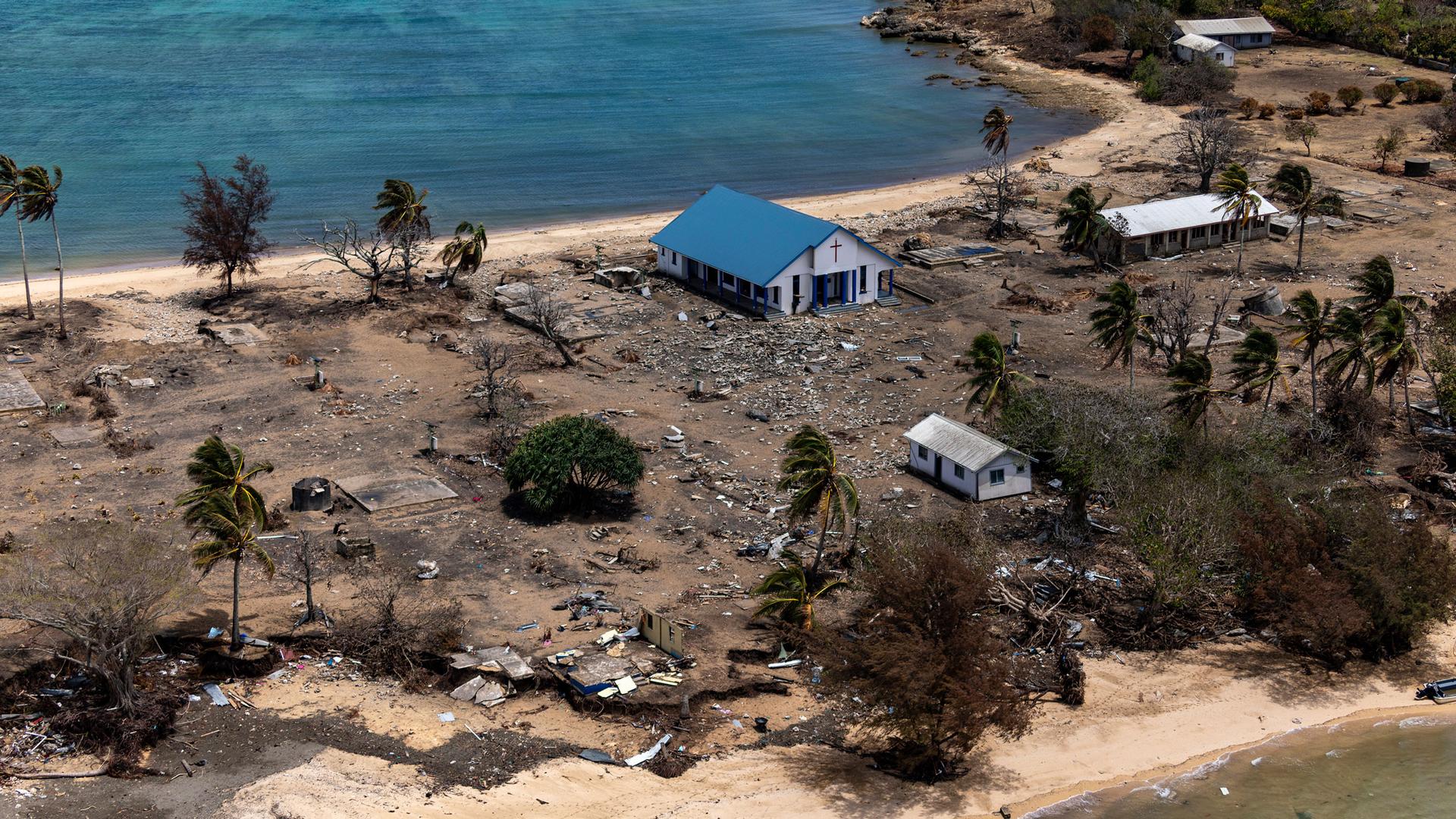Tonga is finally reconnected to the outside world, following the eruption of a massive underwater volcano in mid-January that plunged the country into a near-total telecommunications blackout.
When the Hunga Tonga Hunga Ha’apai volcano erupted on Jan. 15, an underwater fiber optic cable that provides internet and telephone services to Tonga was displaced and severed in multiple areas, said Samiuela Fonua, chairman of Tonga Cable Ltd., which owns the cable.
Related: Tonga volcanic eruption is a ‘1-in-1,000-year event,’ volcanologist says
Fonua, currently stranded in New Zealand because of the eruption, said only satellite connectivity was up and running a few days after the eruption, cutting off nearly all telecommunications across the small Pacific island nation.
During the 40 days offline, Tongans struggled with a massive community clean-up effort and also dealt with the first cases of COVID-19 brought into the area through international aid workers.
Crews were finally able to complete the repairs to the international cable on Feb. 22, reconnecting service providers to Tonga’s main islands — including Tongatapu, where the capital Nuku’alofa is located.
Related: Flights sent to assess Tonga damage after volcanic eruption
The outer islands are serviced by a domestic underwater cable that was also damaged in the eruption and is still in need of repair, something that could take up to a year, Fonua’s group said this week.
Fonua estimates the entire repair will cost more than $2 billion.
“The extent of the damage is far beyond any expectation, really.”
“So, it’s quite a lot of us, because the extent of the damage is far beyond any expectation, really,” he said.
Scientists say the eruption was hundreds of times more powerful than the atomic bomb dropped on Hiroshima. The eruption, combined with the tsunami wave it created, caused widespread damage across Tonga. Three people died. Tsunami warnings rang out across the Pacific — from Japan to the West Coast of the United states.
‘And suddenly it went out’
Images of battered coastlines, flooded homes and entire landscapes covered in volcanic ash circulated online in the following days — thanks to various officials with satellite uplinks.
But it wasn’t until telecoms were restored that Tongans got the first real look at the true extent of the damage.
“After all this time, we’ve heard just stories, but never got to see [the full damage] through the media, through Facebook, through the news.”
“That’s when we actually saw pictures and clips of the devastation,” Tongan resident Saimonita Poango said. “So, after all this time, we’ve heard just stories, but never got to see it through the media, through Facebook, through the news.”

Poango was with his wife, eating at a seaside restaurant on the main island of Tongatapu, some 40 miles from the volcano, when the eruption happened. The building shook and the windows looked like they were about to break, as explosion sounds went on for about 10 minutes, he said.
Afterward, as they navigated heavy traffic, trying to get to the next village to pick up his mother, the ash overtook them, he said. Then “the sunshine went out and the ash and the rain came down.”
“We were still phoning everyone; we were still calling our sisters and brothers overseas in Australia,” he said. “And suddenly, it went out — approximately 14 minutes after we heard the explosions.”
Life in Tonga amid the telecoms blackout
During that time, Poango stayed at his home on Tongatapu near the international airport with about 20 members of his family, scrambling to secure basic supplies like food and clean water.
The eruption blanketed everything in about 2 inches of ash — “just like a snow had fallen [overnight],” he said.
But experts warned that the fallen ash could contaminate crops and drinking water, which is typically collected by gathering rainwater or extracting water from boreholes on the island.

Communities spent a lot of time over the last month cleaning up the immense amount of ash everywhere.
Alice Helu Funaki, who also lives near Tonga’s international airport, was among them. Her family owns a plantation where they grow crops such as taro, yams and sweet potatoes.
“The geology division of the Ministry of Land and Natural Sources advised that if we don’t clean it up immediately, [the ash] would turn into cement and cause more damage to the roof.”
“The geology division of the Ministry of Land and Natural Sources advised that if we don’t clean it up immediately, [the ash] would turn into cement and cause more damage to the roof,” Funaki told The World.
She was at a gas station with her two of her three young children when the eruption happened, and said she lost both electricity and telecommunications at 7 p.m. that evening.
It took them about three weeks to clean up all the ash on the farm and in their house. They did the work themselves, while others who could afford it hired cleaning services.
Funaki said that going through this experience with children has been emotional and difficult. The kids couldn’t play outside for days.
“We tried to be creative but I kept telling them in the simplest way they could understand that we’re OK, we’re going to be fine.”
Related: It took a cyclone for some Tongan women to get reproductive health care for the first time
Still more to do
Back online, Funaki immediately reconnected with family members living outside of Tonga.
Funaki said she still feels overwhelmed and that Tonga hasn’t really caught a break since the eruption.
The influx of international aid following the volcanic eruptions brought in the first cases of community-transmitted COVID-19 to Tonga since the pandemic began. Until Feb. 1, officials had only recorded one case from a traveler in transit.

Now, Tonga has more than 350 COVID-19 cases, but no deaths, according to Johns Hopkins University. The country has loosened the restrictions imposed last month to contain the virus, but various limits remain.
Funaki is finding ways to be positive by thinking of others who are less fortunate than her.
“Though I am feeling overwhelmed, there’s still food, we just had rain for the past two days … there’s a lot still to be grateful for.”
